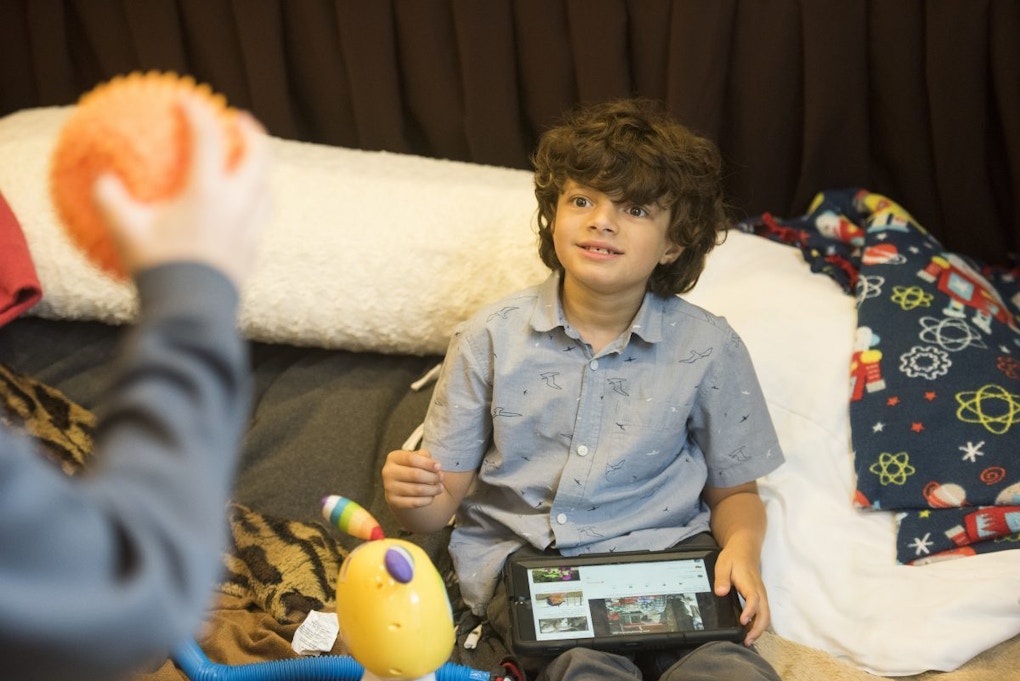
Simons Searchlight is a program of the Simons Foundation Autism Research Initiative (SFARI) that aims to increase our understanding of genetic neurodevelopmental conditions associated with autism spectrum disorder (ASD). Launched in 2010 as the Simons Variation in Individuals Project (Simons VIP), Simons Searchlight takes a “genetics first” approach—recruiting families based on genetic diagnoses rather than clinical phenotypes, in recognition of the complex and heterogeneous nature of ASD and related conditions1.
The project’s initial focus was on individuals with deleted or duplicated copy number variants (CNVs) on chromosome region 16p11.2. Ten years on, Simons Searchlight has grown to encompass 167 genetic conditions, representing 152 distinct genes and 23 CNVs. Providing a wealth of data for researchers, the success of Simons Searchlight is the direct result of overwhelming support from the rare disease community, with over 4,000 families currently registered (Figure 1).
“Simons Searchlight is a community of incredibly dedicated families who are highly motivated to participate in research. Their collaboration with scientists helps advance research and is key to ultimately improve the lives of those affected by ASD and related genetic conditions,” says Wendy Chung, director of clinical research at SFARI and principal investigator of Simons Searchlight.

A goldmine of data for research
Since its inception, Simons Searchlight has been organized around the principle that understanding complex genetic conditions requires researcher access to large numbers of engaged individuals. With this in mind, in 2019 Simons Searchlight joined forces with SPARK (Simons Foundation Powering Autism Research for Knowledge) to expand their community and offer families the possibility to gain access to important research opportunities. A recently launched research matching program is also helping to ensure that interested families learn about, and can be enrolled in, new research studies and, in some cases, clinical treatment trials. And researchers can leverage the matching program to recruit participants for research studies—a process that is especially challenging when studying rare conditions.
But SFARI knew that recruiting large numbers of families was only half the battle. Breakthrough scientific discoveries also required the reliable and thorough characterization of these families. Simons Searchlight focused initially on gathering rigorous clinical data. This included extensive family, medical, behavioral and neurological information from participants and their families through the use of questionnaires and interviews, along with blood and skin samples for biological study.
Through active dialog with the scientific community, Simons Searchlight continued to update the amount and types of data collected from participants. Such conversations have resulted in the additional collection of neuroimaging and neurophysiological medical data, data on epilepsy history and an ongoing exploration of additional data collection efforts (e.g., from wearable sensors such as Fitbits). This approach has ensured that qualified researchers have access to a wealth of high quality behavioral, genetic and brain-based data in Simons Searchlight. Researchers can request to use any of these data through SFARI Base.
Alongside phenotypic data, additional genetic information is available on a subset of Simons Searchlight participants, including single nucleotide polymorphism genotype data, targeted sequencing data, whole-exome and whole-genome sequencing data (see SFARI Base for details). A list of the genetic variants of many individuals enrolled in the study can be found here. Approved researchers can also request biospecimens from a number of participants, including fibroblasts, saliva and blood. Using these specimens, several induced pluripotent stem cell lines have been created with SFARI support, and many more lines are planned to become available for research this year.
Research output
Numerous researchers have taken advantage of the available resources from Simons Searchlight. These efforts are advancing our understanding of the relationships between genetics, brain structure and function, and behavior. And they are helping in the development of better diagnostic tools. The initial publication of the Simons Searchlight project1 occurred in 2012, and since then, more than 60 research articles and preprints that have relied on Simons Searchlight resources have been published.
Initial studies using Simons Searchlight data led to clearly defined neuropsychological, behavioral and neuroimaging phenotypes in 16p11.2 deletion and duplication carriers2-4. Dozens of subsequent studies have refined our understanding of 16p11.2 deletion/duplication phenotypes—characterizing specific cognitive, speech/language and motor control deficits in affected individuals and linking these to brain-based alterations. Further studies have helped clarify the genetic and molecular landscape of 16p11.2. This couldn’t have been done without the dedicated support of participating families.
“We are especially grateful to the families who helped us launch Simons Searchlight 10 years ago. Their contribution was critical to the efforts to understand 16p11.2 deletion/duplication syndromes, catalyzing research that not only continues to help answer important questions that will ultimately improve the lives of those affected by these rare genetic conditions, but also paved the way for research on subsequent genetic conditions,” says John Spiro, SFARI interim director who helped launch Simons Searchlight (formerly Simons VIP).
With the expansion of Simons Searchlight to additional genetic conditions, the understanding of related neurodevelopmental disorders has also increased. We now have a clearer clinical and psychological phenotypic understanding of carriers of 1q21.15,6 and X-linked HNRNPH27 changes. And other studies have led to the development8 and refinement9-10 of a range of clinical behavioral diagnostic tools.
Community building
But it’s not just about research. Over the last 10 years, Simons Searchlight has created a community for families. Simons Searchlight provides discussion forums, webinars, conferences and a participant website that promote connections between families with overlapping genetic conditions. Continuing efforts to foster an inclusive and international community, Simons Searchlight is now available in English and Spanish, with expansion to additional languages coming soon for French, Dutch and Italian.
The Simons Searchlight “genetics first” approach has provided powerful insights into a number of neurodevelopmental conditions over the course of its 10-year history, while also creating a community for families with these conditions. Driven by science and united by hope, ongoing efforts to expand the Simons Searchlight community will surely see further increases in our understanding of, and treatments for, numerous neurodevelopmental conditions over the next decade and beyond.
References
- Simons VIP Consortium. Neuron 73, 1063-1067 (2012) PubMed
- Zufferey F. et al. J. Med. Genet. 49, 660-668 (2012) PubMed
- Owen J.P. et al. J. Neurosci. 34, 6214-6223 (2014) PubMed
- Qureshi A.Y. et al. J. Neurosci. 34, 11199-11211 (2014) PubMed
- Bernier R. et al. Genet. Med. 18, 341-349 (2016) PubMed
- Linden S.C. et al. Trans. Psychiatry 11, 105 (2021) PubMed
- Bain J.M. et al. Neurol. Genet. 7, e551 (2021) Article
- Hanson E.M. et al. Res. Dev. Disabil. 48, 160-175 (2016) PubMed
- Anguera J.A. et al. Psychiatry 6, e893 (2016) PubMed
- Berg A.T. et al. Epilepsia 62, 258-268 (2021) PubMed


